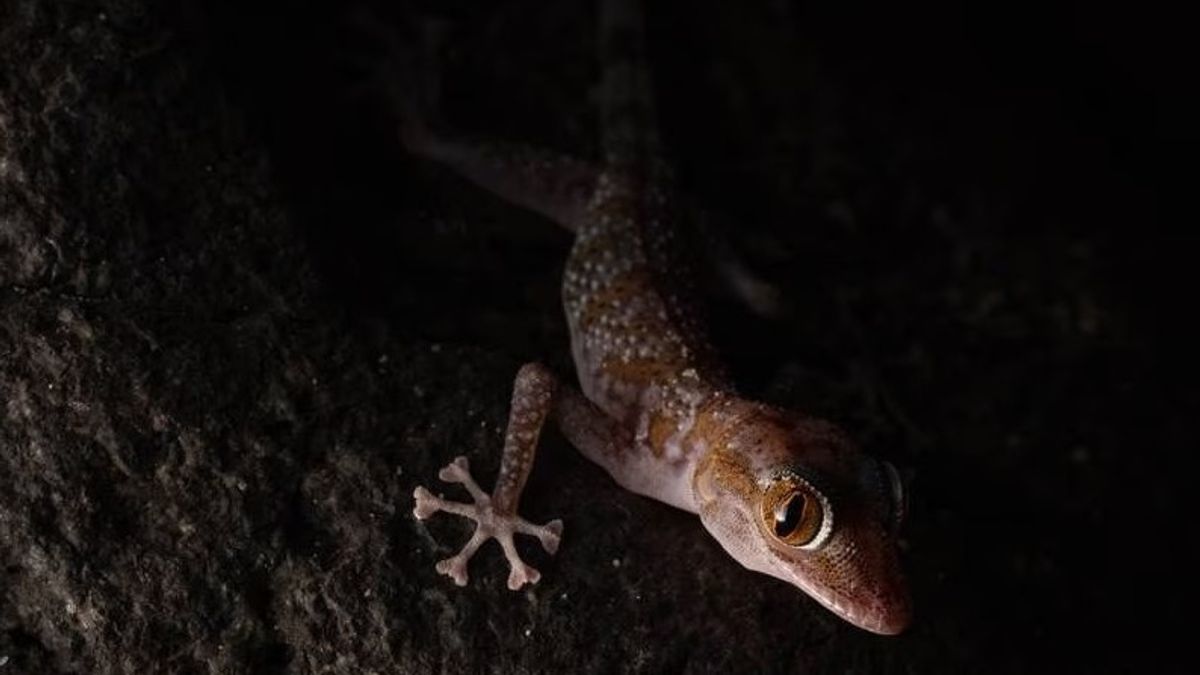JAKARTA - Good news comes from the United Arab Emirates, when research teams managed to find dozens of endemic Tokes of the United Arab Emirates (UAE) that are threatened with extinction on the country's east coast, raising the species' survival hopes.
The United Arab Emirates (Asaccus caudivolvulus) leaf-legged toke is expected to be on the verge of extinction. However, an expedition in 2022 found the Tokes to be in five locations despite rapid development in the region.
Tokeks play an important role in the ecosystem, as they eat insects and help balance the number of species. However, due to habitat loss due to development, the population of tokeks has shrunk.
Asaccus caudivolvolus is now classified as a endangered species by the International Union for Conservation of Nature (IUCN).
The expedition is financed by the Mohamed bin Zayed Species Conservation Fund and aims to help bring the creature back from the brink of extinction.
"There is a lot of pressure because a lot of effort and money are involved," said Salvadoran Prof. Carranza, of the Institute of Evolutionary Biology at Pompeiu Fabra University in Barcelona, who led the expedition.
The field research lasted for 15 hot and humid nights in late May and early June last year, identified by the team as the best time to view the reptile.
They deliberately choose two weeks with little light from the moon, when the Tokek is more active due to reduced risk from predators. They are a nocturnal species and hide in the gaps and deep gaps during the day.
"That night was perfect. If you go in winter, you won't see anything, even if they are there," said Prof. Carranza
The leaf-legged Toke comes from a small part of the Hajar Mountains in the northeastern UAE, the only known species of endemic vertebrate UAE.
The six-member team travels 15 kilometers every night, only using flashlights to map the path through the mountains, down the steep slopes and across the rock surface to find the creature that is difficult to catch and shy.
This toke has a length of about 11 centimeters, somewhat transparent, has long and thin legs to climb, and can only lay eggs once.
His name is obtained from a cushion on his leg which resembles a leaf. He also has bright colors, orange eyes and orange to brown marks on his back.
"He is a very shy creature. When you provide lighting, they immediately hide. We found him in a place we didn't expect at all," said Prof. Carranza.
The team was also able to complete the genome sequence of tokes. This is important to build an overview of animal conservation efforts and assistance. This shows a decline in genetic diversity that can be attributed to a severe and sustainable decline in population numbers.
"If a habitat is reduced, inbreeding can occur," said Bernat Burriel, one of Prof. Carranza's students who worked on this analysis.
"Inbreeding means you have less ability to adapt to a new situation. It ends in an 'extinction Vortex' which means the species cannot adapt and become extinct. We need to preserve it as quickly as possible," he said.
Last summer's expedition was not just a two-week job, but was the culmination of years of efforts by experts around the world, funding agencies, and authorities on the east coast assisting the trip.
"It was a big surprise to find 52," said Johannes Els, of the Arab Wildlife Breeding Center which is threatened with Extinction at the Sharjah Environmental Authority and Conservation Area, which is also part of the expedition.
"But it was a fun surprise. The population was fragmented, but now we have important data that allows us to assess the species," he explained.
Els said a reassessment of the species could now be carried out, which could theoretically trigger different and more positive assessments of the IUCN.
He pointed to the success of the Arabic deer program, which managed to restore the animal from the brink of extinction, as a sign of achievable success.
"The first step is to always try to preserve as many habitats as possible there and leave them untouched," said Els.
"You can't always stop development, but you can make people aware and do it in the least impact on the population in the region," he said.
Other conservation plans that have not been revealed are also being worked on.
اقرأ أيضا:
The rediscovery of species deemed extinct is a relief and encouragement for anyone who loves nature and the biodiversity network that supports our planet, "said Nicolas Heard, acting director general of the Mohamed bin Zayed Species Conservation Fund.
"This brings optimism that we may be able to reduce the rate of extinction and damage we cause to the environment. In this case, finding the leaf-legged toke population in the Emirate is very sad," Heard continued.
"For several years, we thought that the UAE has lost its only unique vertebrate in the country and is not happening elsewhere. This is truly tragic, and its rediscovery is expected to encourage efforts and enthusiasm for further conservation," he concluded.
The English, Chinese, Japanese, Arabic, and French versions are automatically generated by the AI. So there may still be inaccuracies in translating, please always see Indonesian as our main language. (system supported by DigitalSiber.id)


















